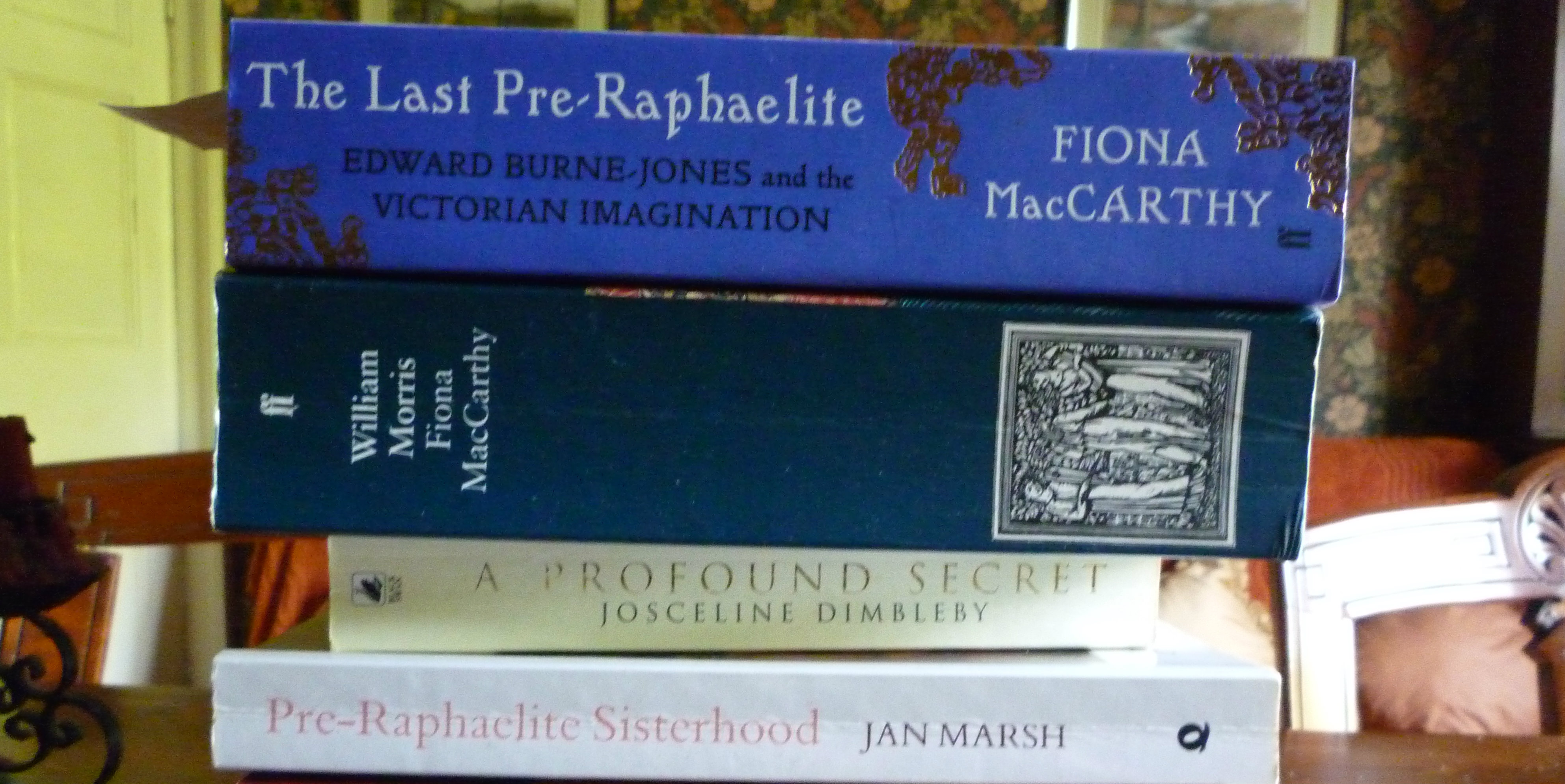Blogs
A Nod to Ned

A Nod to Ned
Edward Burne-Jones, “Ned” to his friends was a Victorian artist and designer, an important member of the Pre-Raphaelite movement.
At the moment I’m reading a biography of him, “The Last Pre-Raphaelite” by Fiona MacCarthy.
I’ve been fascinated by the Pre-Raphaelites ever since I studied the poetry of William Morris for A-level English Literature. Famed of course for his textiles and design work, many are unfamiliar with his poetry.
He writes like an artist and I have always felt that reading his poems is like listening to a description of a painting. I particularly like this from “The Haystack in the floods”:
“Had she come all the way for this,
To part at last without a kiss?
Yea, had she borne the dirt and rain
That her own eyes might see him slain
Beside the haystack in the floods?
Along the dripping leafless woods,
The stirrup touching either shoe,
She rode astride as troopers do;
With kirtle kilted to her knee,
To which the mud splash’d wretchedly;
And the wet dripp’d from every tree
Upon her head and heavy hair,
And on her eyelids broad and fair;
This poem, like many of his, is based on a chivalric story and shows the Pre-Raphaelites love of mediaeval literature. The Arthurian legend held a particular sway over them and Edward Burne-Jones could recite long passages from Mallory’s “Morte d’Arthur” from memory.
Burne-Jones met William Morris at Oxford University where both were studying Theology, both destined for the church. They were unlikely friends: Morris, big, burly, rich, popular, Burne-Jones, tall, thin, poor.
It was a time of great ideas, of excitement, of change. They were young, enthusiastic. They felt they could do anything. They talked, they read, they discovered a love of art and architecture. In those few short years at university they gave up the idea of religion and turned instead to art.
It was a huge risk, particularly for Burne-Jones who had no money, no rich family to fall back on if things went wrong. Morris offered to help support him but Burne-Jones refused. He lived in abject poverty, always hungry, often cold.
These young people with their brilliant as yet unformed ideas met others, established members of the Pre-Raphaelite Brotherhood like the flamboyant Dante Gabriel Rosetti.
It is their lives as artists that fascinates me, the way they intertwined with others: William Morris married to the cold-hearted Janey, who modelled for all of them but fell in love with Rosetti. Rosetti, married to Christina, who never recovered from the death of their baby and died an opium addict. And Burne-Jones himself, married to the long-suffering Georgiana but constantly unfaithful to her, corresponding with other women even on his deathbed.
Looking through my bookshelf I see I have many books already on the Pre-Raphaelites: another biography of Burne-Jones, one of William Morris, one of Lizzie Siddal, “The Pre-Raphaelite Sisterhood” and several books on their art and design, and William Morris textiles. A new book is always welcome though, a new slant on a story I know well, research re-told in a different way in a different voice. It’s a subject I shall never tire of reading about.
Bethany Askew is the author of eight novels: The Time Before, The World Within, Out of Step, Counting the Days, Poppy's Seed, Three Extraordinary Years The Two Saras and I Know You, Don't I? She has also written a short story, The Night of the Storm, and she writes poetry. Two more women’s fiction books have been accepted for publication in 2020 and 2021 respectively and she is currently working on a new novel. In her spare time she enjoys reading, music, theatre, walking, Pilates, dancing and voluntary work. Bethany is married and lives in Somerset.
Recent Comments
- Bethany Askew on About the Author
- Louise Tyrrell on About the Author
- Bethany Askew on About the Author
- Yola Munro on About the Author
- Andrea crosland on About the Author
-
Latest Posts
Meta
Bethany Askew
Bethany Askew is the author of eight novels:
The Time Before, The World Within, Out of Step, Counting the Days, Poppy’s Seed, Three Extraordinary Years,The Two Saras and I know you, Don’t I?
She has also written a short story, The Night of the Storm, and she writes poetry.
Two more women’s fiction books have been accepted for publication in 2020 and 2021 respectively and she is currently working on a new novel.
In her spare time she enjoys reading, music, theatre, walking, Pilates, dancing and voluntary work.
Bethany is married and lives in Somerset.
-
My Twitter Feed
-
Today from Bethany Askew Novelist : Book Review: The Woman in the White Kimono by Ana Johns https://t.co/2J6L2spX7t... 4 years ago
-
Copyright - Bethany Askew 2009 - 2016 Follow @AskewBethany
